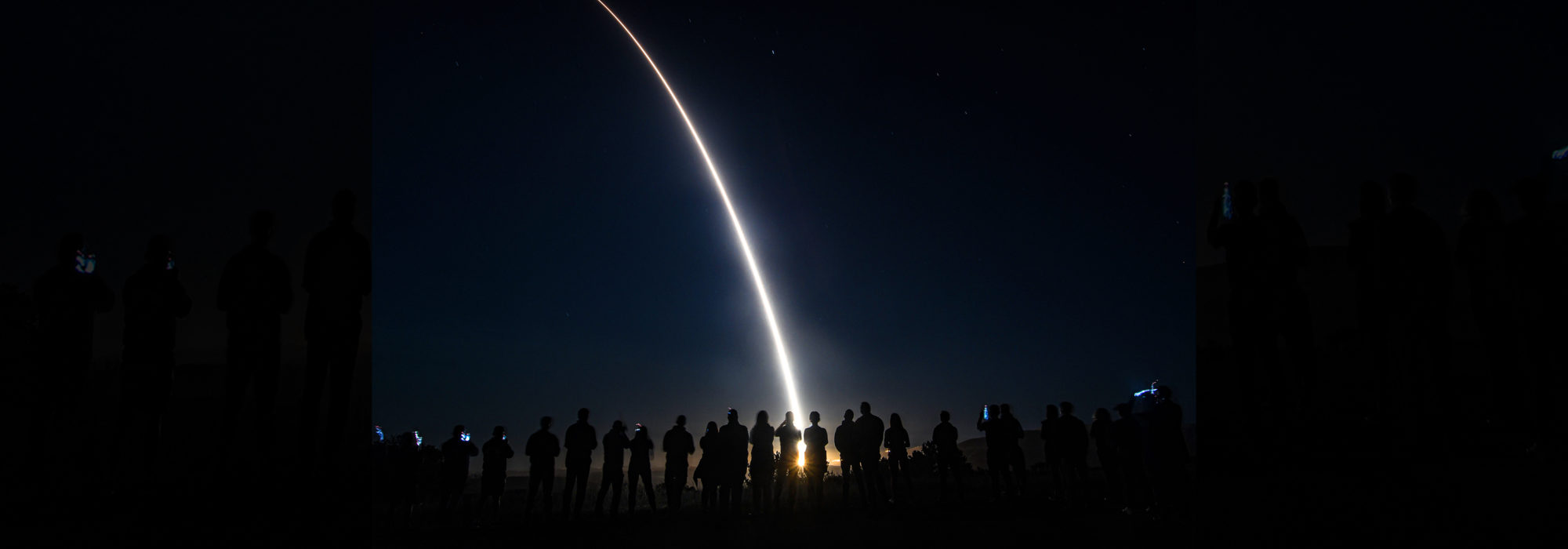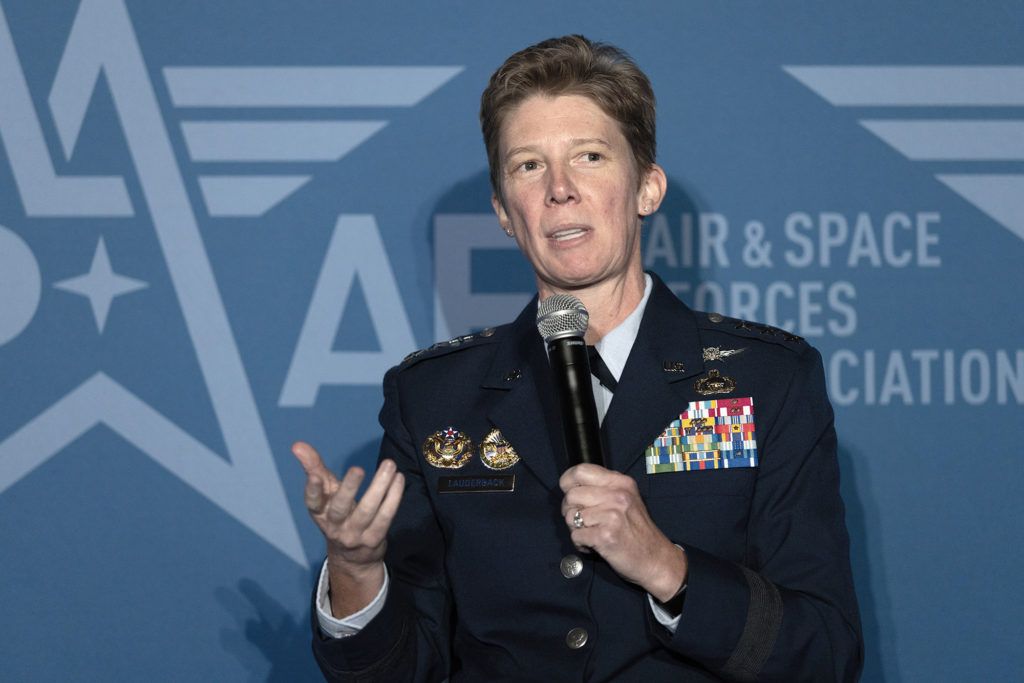AFGSC Launches Second Minuteman III Test in Three Weeks
By Greg Hadley
Air Force Global Strike Command launched an unarmed Minuteman III intercontinental ballistic missile from Vandenberg Space Force Base, Calif., on Sept. 7—its second test launch in three weeks.
The ICBM launched at 1:13 a.m. Pacific time with three test re-entry vehicles, according to an AFGSC release. The vehicles traveled some 4,200 miles before landing in the Kwajalein Atoll in the Marshall Islands.
That’s the same location where the previous test launch, which took place Aug. 16, landed.
This latest launch was overseen by the 576th Flight Test Squadron, stationed at Vandenberg, with support from Airmen from the 341st Missile Wing at Malmstrom Air Force Base, Mont., 90th Missile Wing at F.E. Warren Air Force Base, Wyo., and 91st Missile Wing at Minot Air Force Base, N.D. Space Force Col. Bryan Titus, vice commander of Space Launch Delta 30, was the launch decision authority.
“We have had a busy test schedule just in the past few months and I am in awe of the way our team has performed during each mission,” Col. Christopher Cruise, 576th Flight Test Squadron commander, said in a statement. “Today’s launch sends a visible message of assurance to our allies, and I couldn’t be more proud of the mission of continued deterrence this launch represents.”
The two tests come more than a year after the last publicly announced test launch in August 2021. Previously scheduled tests were either canceled or postponed by President Joe Biden’s administration in an effort to avoid potential miscommunication and escalation with Russia and China.
The first instance, in March, came in the early days of Russia’s invasion of Ukraine, as Russian President Vladimir Putin raised tensions by putting his nuclear forces on high alert. The second, in early August, came as China launched military exercises around Taiwan in retaliation for Speaker of the House of Representatives, Rep. Nancy Pelosi (D-Calif.), leading a congressional delegation on a visit to the island.
AFGSC has repeatedly emphasized that any test launch “is not the result of current world events.” The command has conducted tests in quick succession before. In May 2019, AFGSC launched two Minuteman IIIs in the span of less than two weeks.
‘We’re Not Ready’ to Fight China in Space and Cyber
By Chris Gordon
The United States is unprepared for a wartime fight with a peer adversary in the space and cyber domains, top U.S. generals said Sept. 20 at AFA’s Air, Space & Cyber Conference.
“The answer is no, we’re not ready,” Lt. Gen. Leah G. Lauderback, Air Force deputy chief of staff for intelligence, surveillance, reconnaissance, and cyber effects, said when posed the question by Lauren Barrett Knausenberger, the Department of the Air Force’s chief information officer.
At the end of 2015, the Chinese stood up the People’s Liberation Army Strategic Support Force (SSF). This newest part of China’s armed forces focuses on the “strategic frontiers” of space and cyber, including electromagnetic and information warfare.
Partially in response to these increased capabilities, the U.S. Space Force was created in 2019.
“As we pivot to China, what gives me concern is how fast they’re moving,” said Space Force Brig. Gen. Gregory J. Gagnon, the service’s director of intelligence, surveillance, and reconnaissance. “We have to tell that story. Because that’s the story that I think people who make resource decisions need to hear.”
According to Gagnon, the Chinese have over 260 satellites surveilling the Pacific.
“Why? To provide warning and to provide strike capability if directed by leadership,” he said.
The threat is a current one, not a distant prospect.
“We’re talking about the PRC, and Russia, and think about the spectrum of conflict. We clearly are in competition with both,” Lt. Gen. Kevin B. Kennedy Jr., commander of Air Forces Cyber, told a room of service members. “We’re being targeted. You, personally, are being targeted right now by our adversaries whether it’s via social networks, devices, or the information that you’re using to accomplish your mission.”
But the most concerning element of the Chinese SSF’s role has not been tested. The Department of Defense has a plan to connect all its data in a concept known as joint all-domain command and control (JADC2). The SSF’s brief is to be able to disrupt such a network.
The U.S. still has much work to do to protect and advance its electromagnetic spectrum operations, a key pillar for an interconnected military.
“We are nowhere near where we need to be with that,” Lauderback said. “We are just starting the sprint with the acquisition community and with the operational community. … It is something that we do not have a deep bench on at all. And we’ve got to do it.”


